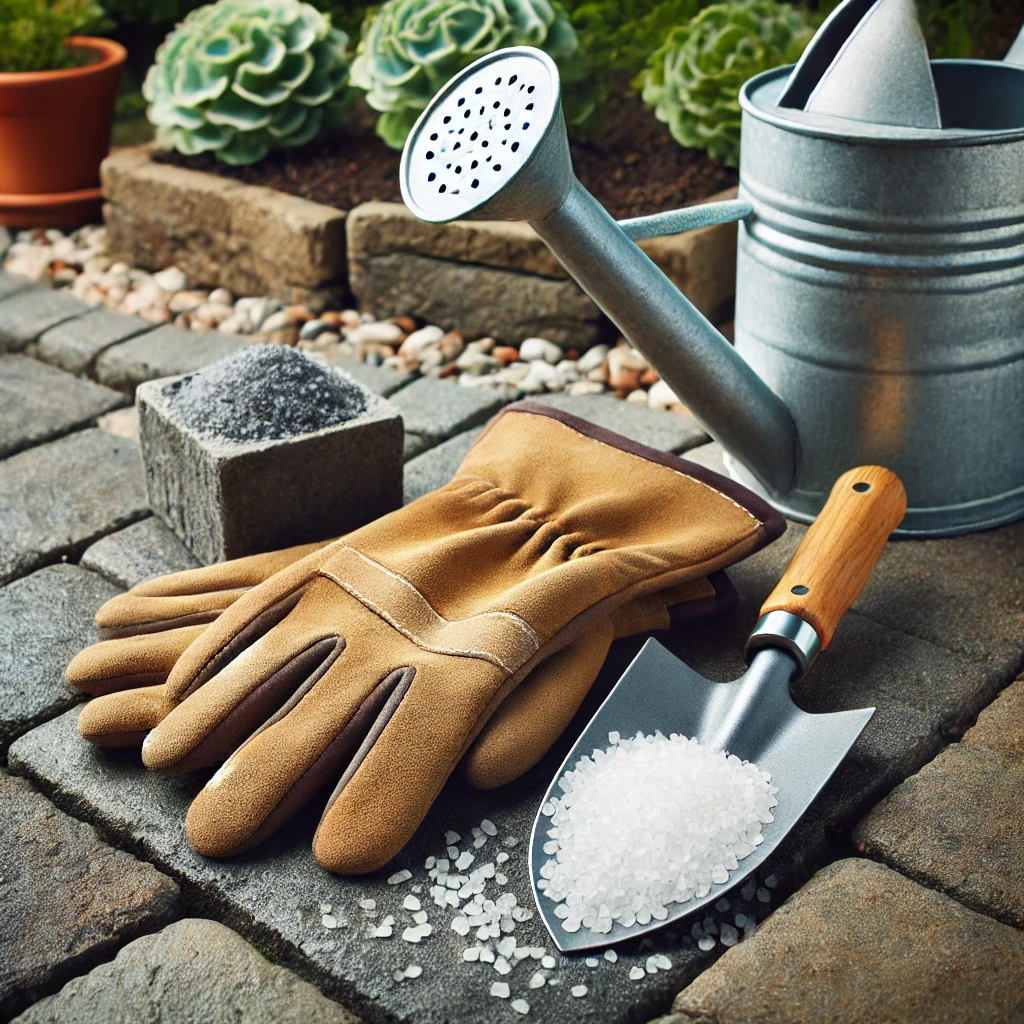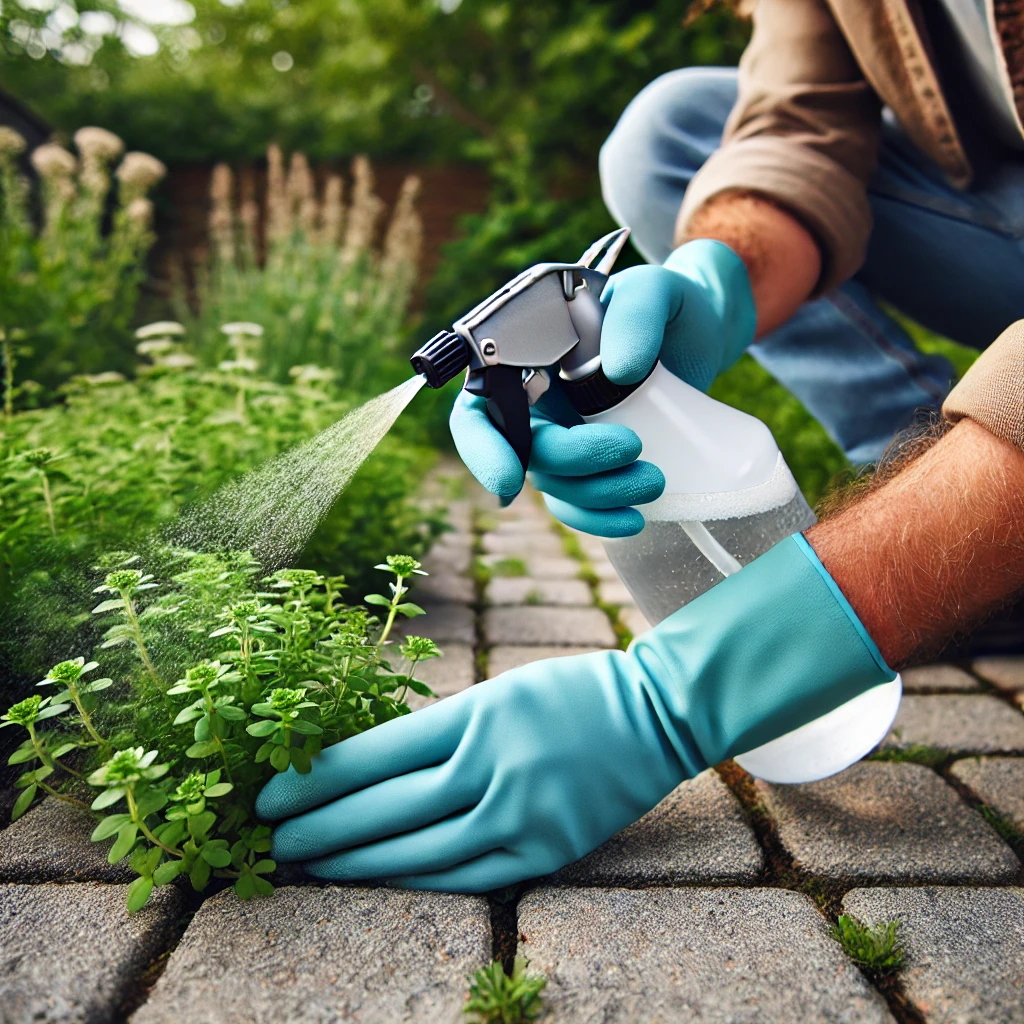
As someone who’s spent countless hours cultivating a garden, I’ve come to realize that weeds are simply part of the job. Over the years, I’ve tried everything from pulling them by hand to using commercial herbicides.
While each method has its place, I’ve found salt to be an effective, low-cost solution in certain areas—especially in places where I don’t want anything else growing, like pathways or the cracks between patio stones.
Why Salt Works So Well on Weeds
Salt has a strong dehydrating effect on plants. When applied directly to weeds, it disrupts their ability to absorb water, essentially drying them out from the inside.
However, salt doesn’t stop working once the weeds die—it lingers in the soil, which is why I’m careful to use it only where I’m sure I don’t want future plant growth.
Step-by-Step Guide to Using Salt for Weed Control

Through trial and error, I’ve come up with a simple yet effective way to use salt against weeds. Here’s my step-by-step process:
- Choose the Right Areas: This is the most critical step. I’ve learned to use salt sparingly and only in places where I don’t want anything else growing for a while. Salt can prevent any plants from taking root for a season or longer, so I only apply it in cracks in my driveway, along walkways, or in gravel areas.
- Mixing Salt Solution: My go-to mix is a blend of one part salt to two parts water, with a small squirt of dish soap. The soap acts as a natural surfactant, helping the salt solution stick to leaves and stems for a more potent effect. If I’m targeting larger, tougher weeds, I’ll make a stronger mixture with less water or apply dry salt sparingly.
- Apply Directly to Weeds: This step is where precision comes into play. I carefully pour or spray the solution directly on the base of the weeds, making sure it doesn’t spread to nearby soil. For cracks or narrow spaces, I sometimes sprinkle a bit of dry salt right at the weed’s base. Just remember, a little goes a long way.
- Follow Up on Sunny Days: From my experience, applying salt on a sunny day speeds up the process. Sunlight helps the salt penetrate faster, working with it to dehydrate the weeds more quickly.
Tips for Safe and Effective Salt Use
Salt is powerful, but it comes with its own set of cautions. Here are some more tips I’ve picked up for you:
- Avoid Runoff: Salt can easily spread to unwanted areas if it gets washed away by rain. I try to apply it on clear days and only when the forecast is dry for a few days. I’ve also experimented with using a narrow nozzle to spray salt solution more precisely, reducing the risk of runoff.
- Rinse Garden Tools: Salt can corrode metal, so I’m careful to rinse any tools that come into contact with salt. If I use a spray bottle, I make sure to flush it with clean water after each use to keep it in good condition.
- Testing Small Areas First: If you’re new to salt weed control, try it in a small area first. This way, you’ll see how the soil responds and get a feel for how much salt is necessary.
- Limit the amount: Applying too much salt can lead to long-term damage to your soil. Always use it sparingly.
- Avoid garden beds: As we mentioned earlier, salt can kill any plant it touches. So, avoid using it in areas where you want to grow flowers or vegetables.
- Wear gloves: If you’re handling coarse salt or using a strong mixture, gloves will protect your skin from irritation.
Pros and Cons of Salt Weed Control
Pros:
- Cost-Effective: Salt is inexpensive and readily available, making it a great option if you’re dealing with weeds in large non-plant areas.
- Non-Toxic to Humans and Pets: Compared to commercial herbicides, salt is a natural alternative that’s safer for people and animals in the long run.
- Long-Lasting: Salt remains in the soil for quite some time, so weeds are less likely to return in treated areas.
Cons:
- Long-Term Soil Damage: Salt doesn’t discriminate, meaning it can damage all plant life. In garden areas, even a small amount can disrupt the ecosystem and harm beneficial organisms.
- Environmental Impact: Salt can spread to surrounding areas, affecting nearby plants and potentially contaminating groundwater if used excessively.
- Requires Caution: Unlike other natural remedies like vinegar, salt use is a long-term commitment. Once in the soil, it’s challenging to remove.
Alternatives to Consider
While salt is a reliable option, it’s not always suitable for every situation. Here are a few alternatives I sometimes use in my garden:
- Vinegar: A solution of vinegar and water can be just as effective for weeds, especially when combined with a bit of dish soap. Vinegar breaks down faster than salt, making it a good choice for areas where I want to replant.
- Boiling Water: This method works well for smaller weeds or weeds in confined spaces. It’s also completely eco-friendly, though it requires a bit more effort if you’re dealing with a larger area.
- Mulch and Ground Covers: Covering bare soil with mulch or planting ground-covering plants can help reduce the number of weeds naturally. I’ve found that keeping the soil covered is one of the best long-term solutions for weed prevention.
My Final Thoughts on Using Salt for Weed Control
Using salt in the garden has taught me a lot about balancing effective weed control with responsible gardening practices. Salt is powerful and effective, but it requires a careful hand.
With the right approach and a few safeguards, it’s possible to use salt without causing long-term harm to your garden. Remember to think of it as a tool for specific, targeted areas rather than a general solution for all weeds.
In gardening, every decision has an impact. For me, using salt has been about finding a balance—leveraging its benefits without overdoing it. If you’re curious about trying it in your garden, I’d encourage you to start small, see how it works, and adapt based on what’s best for your plants and soil.

